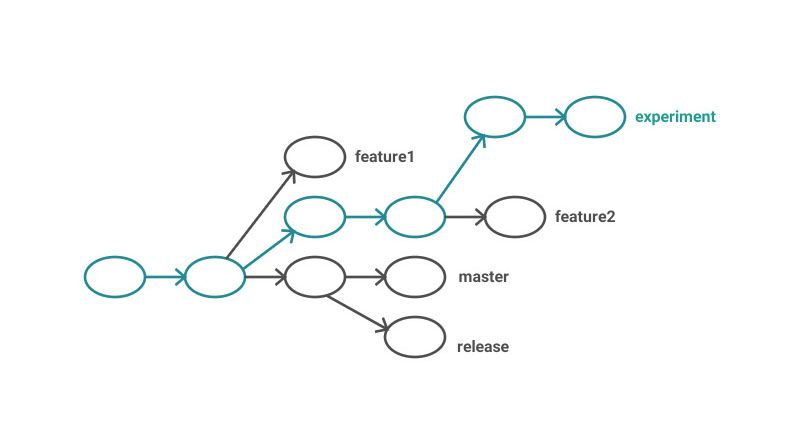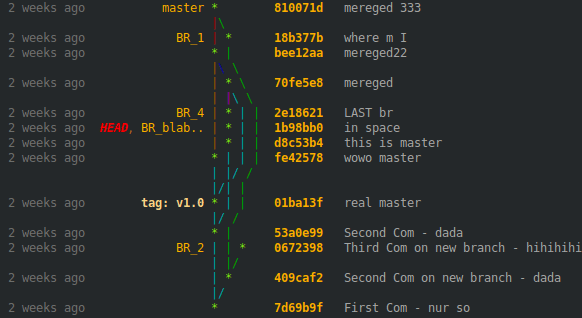

You don't have to follow all of these examples, or any of them for that matter.
Git create branch inplace how to#
Most of you probably know how to make branches, link remotes to them and push commits to them, but are you familiar with the naming conventions for each branch in your repository? If you are working on a medium or large-sized project, you need to have multiple branches in your git repository for managing your work.
Git create branch inplace code#
(But this is what fixing a "day zero bug" looks like when you have a bunch of different products that all share the code-base with the day-zero bug.While I'm getting code samples for the next part of my MomentJS series ready, I decided to write a short interlude post on how to create branches in Git that match your project's workflow.
Git create branch inplace Patch#
Once you're all done, you should probably git checkout somebranch to get back "on a branch", and away from this "detached HEAD" state.Īs noted in comments, needing to apply a patch as wide-spread-ly (is that a word?) as this suggests that maybe there's something wrong with the whole process. (this is what we did for copying F to F', more or less) giving: F' <- br2 $ git branch -f br3 HEAD # and move br3 label here Here are the steps: $ git checkout br2^ # get back on E' as a detached HEAD Now we need to copy G to G', attaching G' to E'. In this case, I'm doing that to build the new br2 without using a branch name, then moving the branch name to the new chain of commits once it's ready.) Having HEAD refer to a branch is the "normal" way of working, but you can fake it after-the-fact in "detached HEAD" mode with git branch -f. All added commits move HEAD: it's just that if HEAD is a reference to a branch, they also move the branch one step forward as you work. (This is the "or strictly speaking" part I wrote above: you can add commits to a repository, then move branch labels around so that they label the new commit chains, rather than their old ones.

We're now ready to make br2 refer to commit F': $ git branch -f br2 HEAD Now we can copy commit F to F': $ git cherry-pick br2 Once the commit finishes, we have this (still with the "detached HEAD): E' <- HEAD $ git commit # make new commit E' that's fixed Now: $ git cherry-pick -n br2^ # make a copy of E but don't commit yet We'll git checkout D (by its SHA-1, or-equivalently with this graph-by using br2~2 to name it) to get a "detached HEAD" there: D <- HEAD Let's draw the starting point, leaving out A through C. In that case, you can check out commit D and make a new commit, E', that comes off of D. Suppose further that either no one else has commits F and G-or, you're willing to force those who do have those two commits, to do a bunch of work to recover from what you are about to do. For instance, suppose branch br1 is actually OK, and what you've discovered is that commit E is broken and needs to be fixed, affecting commits F and G. Repeat for all branches to which the patch must be copied (and, if necessary, modified to fit that branch).

$ git cherry-pick br1 # take diff of `C`-vs-`X1`, apply to `F` to make `X2` make fix, "git add", "git commit" to create X1 But you need to be "on" those branches to add commits to them, so: $ git checkout br1 Then (as in your question) you just move to the other branches and git cherry-pick to create (and possibly resolve conflicts in) the other X-es. You may construct any of the three Xn commits first, in the usual way. Note that there is no guarantee that, e.g., the change from C to X1 exactly matches the change from F to X2 here, either. (note that all 3 Xn commits are different commits as they have different parents), then you must add "patch X" to commit C, and then add "patch X" to commit F, and then add "patch X" to commit G. (Below, I'll show a way of doing this with the "detached HEAD" state, although if you're adding commits to existing branch-tips, that's more work than just checking them out.)Īssuming you have something like this: A-B-C <- br1Īnd you have some fix X that must be applied on top of C, F, and G to give: A-B-C-X1 <- br1 New commits are always added to "the current branch", even if that's a "detached HEAD".

No-or strictly speaking, "yes, but it's just as much work any other way".


 0 kommentar(er)
0 kommentar(er)
